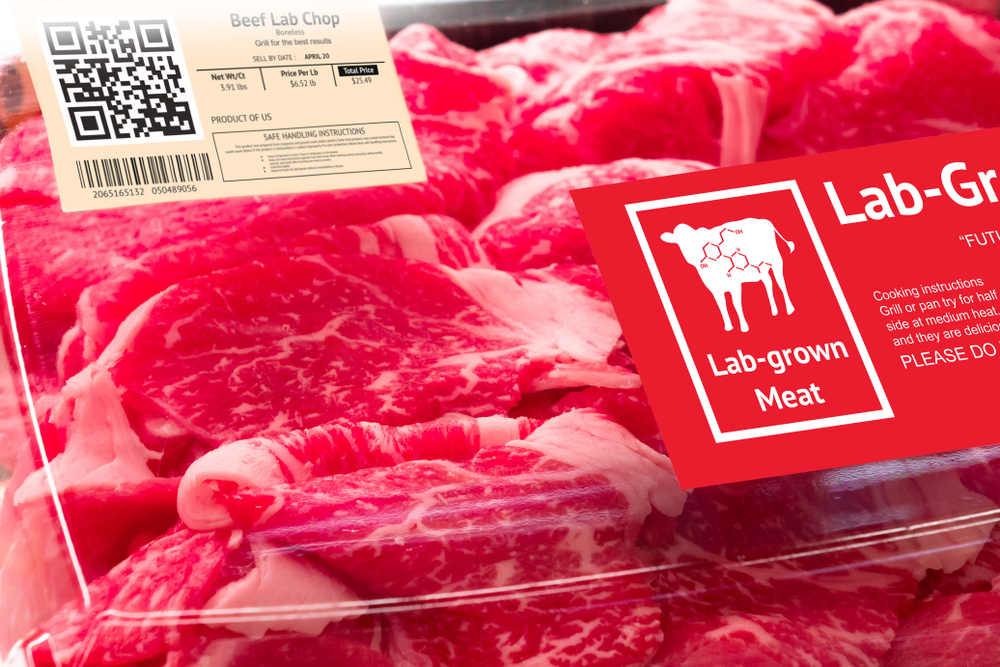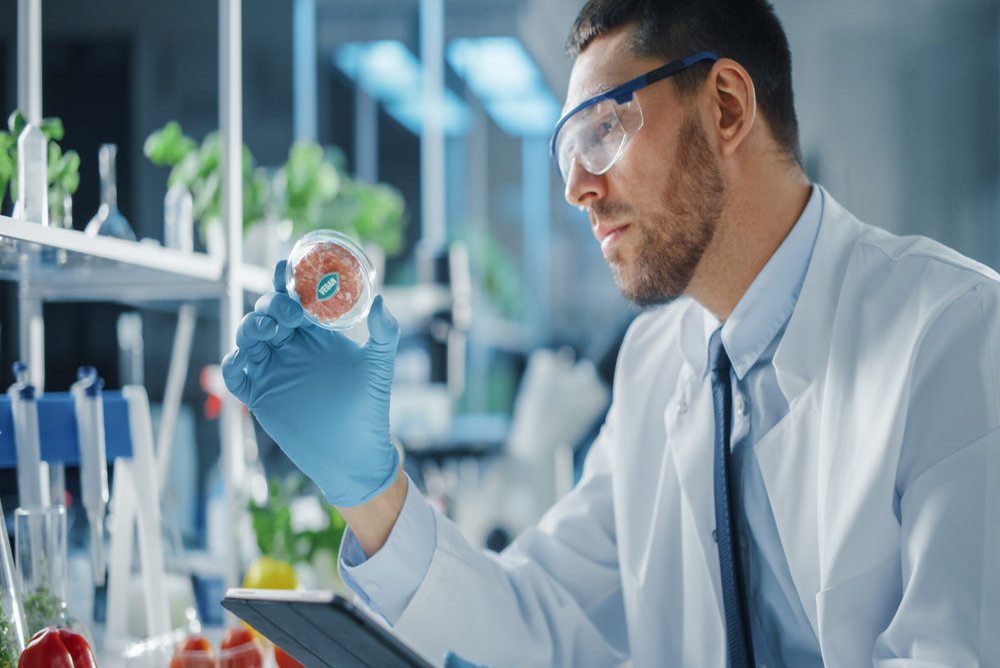What are your thoughts on real meat without the animals? It’s a fascinating vision that would offer incredible benefits to the world! It would positively contribute to animal welfare, human health, and taste, biodiversity, and world hunger, to name a few. While there was a time where lab grown meat seemed like something grabbed from science fiction, rapid advancements in technology have made it possible!
What is Lab Grown Meat?
Lab grown meat has been called many different names, including cultured meat, clean meat, and synthetic meat. No matter the name, they all refer to the same process. The process of creating cultured proteins looks nothing like raising animals. Essentially, it is meat that is formed by utilizing the cells of an animal in a lab. No live animal is grown or harmed in the process, all that is taken is a few cells which are then cultivated to grow in vitro. The cells used usually involve these two types of cells:
- Primary Cells – these cells have already been developed into muscle cells
- Stem Cells – these cells are undeveloped and can be altered to become any type of cells
The Environmental Benefits of Lab Grown Meat
There are countless environmental advantages to producing lab grown meat. Animal agriculture is the cause of an estimated 15% of man-made carbon emissions that contribute to climate change. This makes raising animals more harmful to our planet than the combined transportation sector altogether! Additionally, animal agriculture contributes to deforestation due to the need for massive amounts of land to grow them. It’s also a big cause for pollution as the run-offs from concentrated animal feed enter our waterways.
Lab grown meat, on the other hand, has a significantly lighter weight on the planet. Compared to conventional meat, cultured meat is estimated to cause up to:
- 92% less global warming and
- 93% less air pollution
- 78% less water
- Use up 95% less land
If people turn to lab grown meat, it could significantly reduce the number of animals needed to be reared along with the amount of feed needed to feed them. This would divert hundreds of millions of gallons of water and thousands of acres of land for human use rather than animal. It can even be used to rehabilitate wildlife that are in dire need of this land. Additionally, by planting more vegetation, trees, and plants, more carbon would be pulled out of the atmosphere and cool the planet of the rising global warming concern.
An Ethical Alternative to Industrial Animal Farm
Did you know that more than 60 billion sentient animals are raised in industrial conditions in order to produce meat? This cruel way of growing animals to meet the demands for meat is terrible. The needless suffering inflicted upon animals, whether through direct action or inaction/neglect, is morally indefensible and must be stopped.
A common example of how intensive animal farming is cruel can be seen with broiler chickens. These chicken breeds are optimized for rapid maturation and morbid obesity. Kept in intensive farming conditions throughout the industrialized world, these birds frequently experience lifelong suffering from their legs collapsing under their own ponderous weight and from chronic sickness due to poor ventilation, overcrowdedness, and/or tightly confined living conditions.
The only solution to these cold-hearted methods is lab grown meat. Without the need to mass-produce animals at a fast pace to keep up with the demand, animals will no longer need to be put in inhumane environments.
Is Lab Grown Meat Healthy?
While lab grown meat is undeniably better for the planet, is it a healthier alternative to conventional meat? Well, it depends. Since it’s animal meat, it still has the same type of fat, protein, and nutrients found in conventional meat. The concerns are the same for people who are consuming regular meat as for lab grown meat because it will still have cholesterol and saturated fat. However, lab grown meat can be modified so that it can offer lower levels of cholesterol or higher levels of omega-3 fatty acids. Nutrition aside, cultured meat does come with a significant health benefit, and that’s the elimination of foodborne diseases. Because it’s grown in controlled conditions, chances that animal transmitted diseases will infect the meat are nearly zero! The CDC reports that 75% of new or emerging infectious diseases in human beings come from animals. Without having to worry about these issues, we can consume our meat with greater peace of mind!

The Future of Lab Grown Meat
Lab grown meat appears to be the solution that’ll alleviate the harmful impact that animal agriculture does to our planet. It will also ease animal suffering and free up land and resources that can instead be used to grow more food for humans, thus helping to put an end to global hunger. This is the optimal solution for people who want to enjoy meat in a more environmentally friendly and humane way.
At Aceneca, we want to spread ideas that could potentially become the seed for a profitable business. Whether you would like to create a restaurant built around lab grown meat or would like to create a business that revolves around the topic of sustainability, Aceneca’s purpose is to guide your efforts to create a viable and profitable business while making positive environmental and social changes. With the implementation of purpose and shared value, we can help you grow your business AND make a difference! Click here to get in contact with us today!
